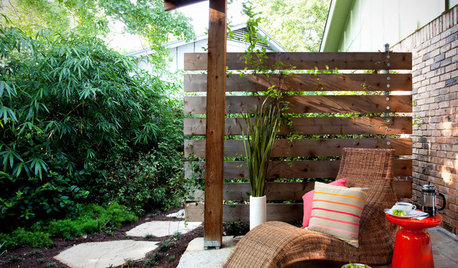Organic for next year
soup006
12 years ago
Related Stories

KITCHEN DESIGNGuest Picks: Organizing Your Kitchen for the New Year
Resolve to find a place for plastic bags, compost and piles of dishes to declutter your kitchen
Full Story
COLORPantone Unearths Emerald as Its 2013 Color of the Year
Whether you dig a natural version or go for one with polish, Pantone is predicting you'll treasure emerald green at home over the next year
Full Story
COLORColors of the Year: Look Back and Ahead for New Color Inspiration
See which color trends from 2014 are sticking, which ones struck out and which colors we’ll be watching for next year
Full Story
DECORATING GUIDES11 Tips for Picture-Perfect Mantel Styling All Year
The garland is gone; the holly is history. But you can keep your mantel arrangements artful no matter which decorations you choose next
Full Story
DECLUTTERINGClutter vs. Keepers: A Guide to New Year's Purging
Simple questions to get in touch with your clutter comfort level — and figure out what needs to go
Full Story
ORGANIZINGGuest Picks: How to Get It Together in the New Year
20 items to help you get organized and on top of things in 2012
Full Story
NATIVE PLANTS5 Ways to Keep Your Native Plant Garden Looking Good All Year
It’s all about planning ahead, using sustainable practices and accepting plants as living organisms
Full Story
LANDSCAPE DESIGNThe Best Winter Garden Project? Plan for Next Year
Consider these 9 ideas now for a highly personal, truly enjoyable garden come spring
Full Story
KITCHEN DESIGNNew Year's Resolutions for Your Kitchen and You
11 ways your kitchen can help you meet your goals for the coming year
Full Story
BATHROOM DESIGNNew Year's Resolutions for Your Bathroom
Set up your bath for conservation, multi-tasking, safety and relaxation
Full Story





Kimmsr
dogwind
Related Professionals
Londonderry Landscape Architects & Landscape Designers · Beachwood Landscape Architects & Landscape Designers · Burien Landscape Contractors · Cupertino Landscape Contractors · Lebanon Landscape Contractors · Oak Forest Landscape Contractors · Stony Brook Landscape Contractors · North Aurora Landscape Contractors · La Vista Driveway Installation & Maintenance · Lake Forest Driveway Installation & Maintenance · Bakersfield Swimming Pool Builders · Bellmawr Fence Contractors · Bonney Lake Fence Contractors · Grandview Fence Contractors · Thousand Oaks Fence ContractorsKimmsr
soup006Original Author
versstef1
david_tx
Kimmsr
versstef1
Kimmsr